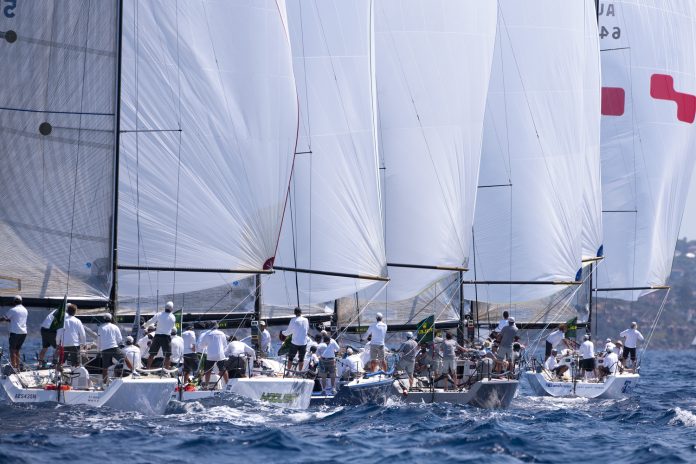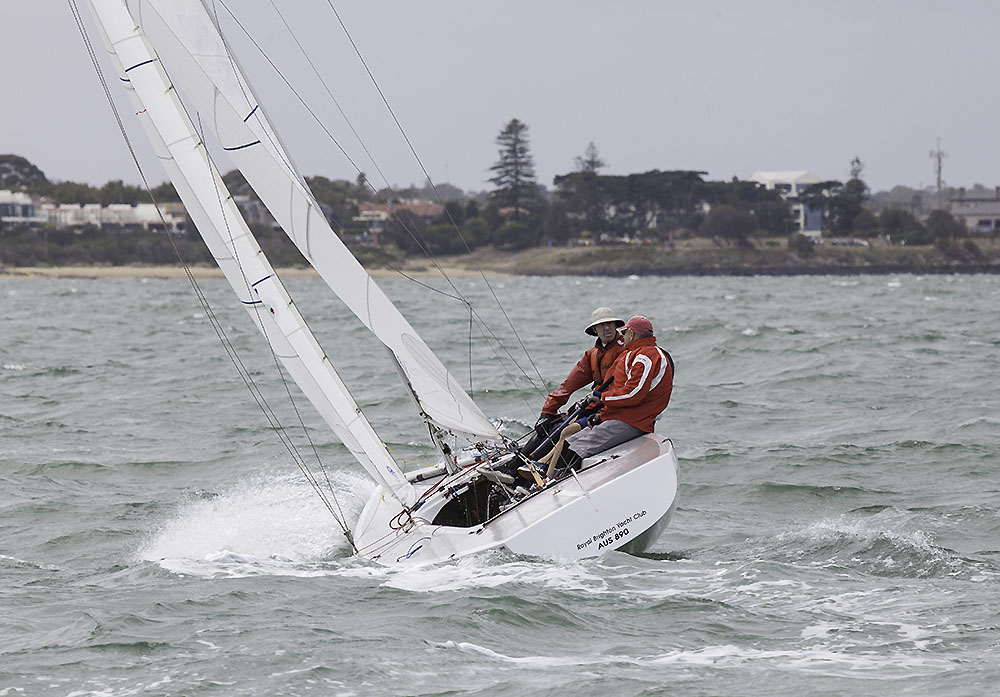

Excerpts from an interview with highly accomplished Dinghy through to Maxi Yacht sailor and North Sails sailmaker Michael Coxon who answers your questions regarding sail controls and their effects.
Brett: Michael, could you explain the effects of the major sail shape controls.
Michael: the most important sail control for any boat, is the sheet tension. That’s the most significant variable in anything and it’s a fairly basic answer, but the fact is that the sheet tension is the number one.
Once you’ve got the sheet tension control it comes to getting the more subtleties of what sail sectional shapes you want to achieve. Where the sheet tension will tend to control the twist of the sail and the general drive of it, you can actually then use the subtler controls.
Controls on a main sail include the outhaul and the Cunningham eye. One very important thing depending on the boat is the mast bend and how you achieve the mast bend. If the mast bend is achieved by having a backstay, it makes the exercise fairly easy. You can actually do infinite adjustments.
If it’s a non-backstay boat it will depend on things such as boom vang, again, sheet tension; it will depend on if you’ve got control of the mast at the deck. In other words, can you control the pre-bend in the mast whether through a leaver or a chocking system.
Another big variable is rig tension. By increasing rig tension you’ll put more compression through your rig and increase, obviously the tension, but also the pre-bend in the rig. And that would be the major controls on my boat.
Brett: Any other sail shape controls?
Michael: When we take headsail, obviously car fore and aft is a big deal with a jib, luff tension I don’t think is a huge deal with a stable sail.
It’s mainly car fore and aft. Some boats have the ability to adjust in and out also, so you can in-haul and out-haul. That’s a big deal, and sheet tension. So with a jib, the really critical ones are car position and sheet tension.
Brett: You talked a little earlier about forestay sag.
Michael: As an example, really critical on an Etchells. Being an older style, it’s a 40-year-old designed boat with an aluminium rig. It’s actually harder to set up than more modern boats that are, say, carbon.
There are a lot more variables because they get a lot more mast bend. So you go through a lot more range and to address that the extra mast bend you’ve got more luff curve. You’ve got excess cloth in certain conditions. What you do with it, that’s the question.
Certainly, mast bend and rig tension is a big deal with any setup. The general rule is the softer the air, the softer the rig. As the pressure goes up, the tighter the rig. That will then get you a tight forestay and a tighter forestay will give you a finer entry on your jib or a flatter jib.







